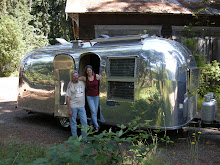 Apalachicola, or “Apalach” as the locals call it, lies at the end of the Apalachicola River where it gently meets the Gulf of Mexico. Although visited for hundreds of years by the Spanish and other explorers, the area was sparsely populated. Founded in 1831, the town was established to receive the huge shipments of cotton that would come down the river by barge and then be loaded on ships that would take this valuable cargo to points around the world. By the 1850’s, the town was bustling with activity, and three story brick warehouses lined the waterfront. The town continued to prosper, and was able to survive the Civil War when Federal troops blockaded the harbor to prevent the South from shipping out one of its few precious revenue producing crops and receiving goods from the British in exchange. However, with the advent of the railroad the business of shipping cotton by barge began to decline, and by the late 1800’s had all but disappeared.
Apalachicola, or “Apalach” as the locals call it, lies at the end of the Apalachicola River where it gently meets the Gulf of Mexico. Although visited for hundreds of years by the Spanish and other explorers, the area was sparsely populated. Founded in 1831, the town was established to receive the huge shipments of cotton that would come down the river by barge and then be loaded on ships that would take this valuable cargo to points around the world. By the 1850’s, the town was bustling with activity, and three story brick warehouses lined the waterfront. The town continued to prosper, and was able to survive the Civil War when Federal troops blockaded the harbor to prevent the South from shipping out one of its few precious revenue producing crops and receiving goods from the British in exchange. However, with the advent of the railroad the business of shipping cotton by barge began to decline, and by the late 1800’s had all but disappeared.Luckily for the town, but later on disastrous to the environment, the logging barons of the Northeast, having depleted the great forests of the North, then turned their eyes on the huge Cypress forests that graced the land. The town reinvented itself, and the cotton warehouses gave way to lumber mills, and soon the lumber barons were building the magnificent Victorian homes that still give this town its Southern charm and beauty. Logging continued for many years, but all too soon, the slow growing Cypress were also depleted, and the logging business moved on to plunder the newly opened virgin forests of the West.
Once again the town was struggling to survive, but by the end of the 19th century, the harvesting of seafood had rebuilt the waterfront with processing houses and the burgeoning oyster business brought much needed revenue to the area. The county now harvests more than 90% of Florida’s oysters, and about 10% of all the oysters consumed in the U.S. Known for their mild briny flavor, they are favored by chefs around the country. Shrimp, blue crab, and a variety of fish are also caught and processed here.
Today, the town retains the flavor of a small fishing village, and is still pretty sleepy for a tourist town. The people who come here come for the local flavor, not for the miniature golf courses, shopping malls, and big chain restaurants, as they are nowhere to be found. The wide tree-lined streets and the meticulously maintained homes reflect the pride and the spirit of the people who live here. Many of the old buildings have been preserved and the downtown is an eclectic blend of unassuming shops and unique restaurants where the chefs sometimes wander from their kitchen to the neighbors to get a taste what’s going on over there.
Despite all the challenges, the town is determined to stay alive no matter what gets thrown at it. When we were there however, the relentless volcano of oil that is now gushing from the sea floor hundreds of miles away was just another oil rig in the Gulf of Mexico, and the name Deepwater Horizon had not yet spelled potential disaster. The last two hurricanes that came through here did a lot of damage, and there are still dozens of boarded up buildings and abandoned piers along the water. One gets the sense that it wouldn’t take much more to push this area over the edge and make another recovery damn near impossible, but these people are tough and resilient. Let’s just hope the chorus “Drill Baby Drill” is not their final swan song.




Hey John,
ReplyDeleteI love your travels and writing, next time take me too.
Ken
Renovo Bikes